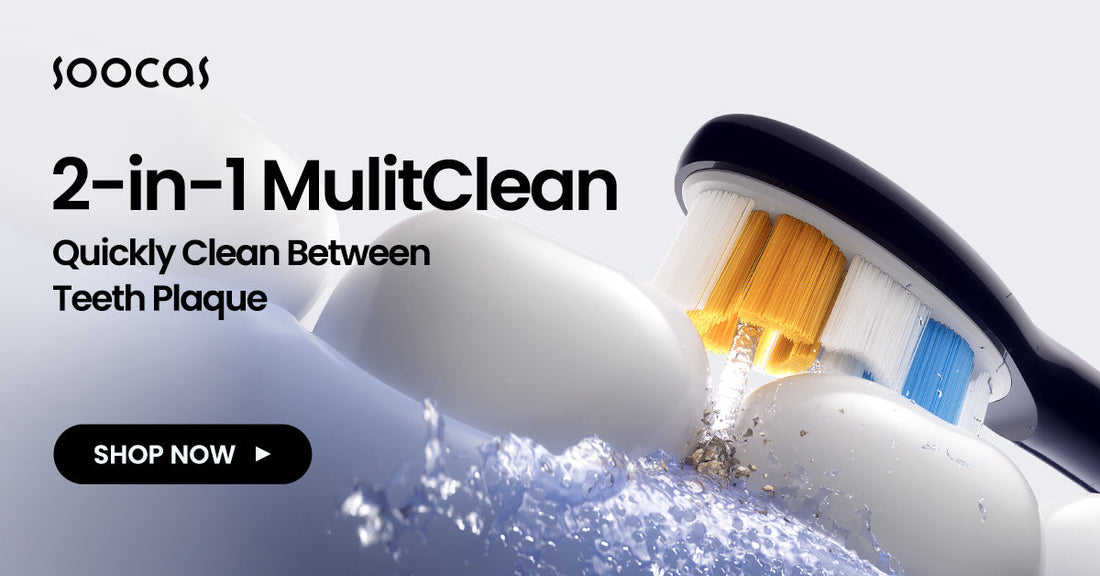Gaps in teeth after deep cleaning

What are gaps in teeth?
Gaps in teeth are the spaces between teeth, which are also referred to as diastemas. Misalignment, variation in jaw size, or tooth size discrepancies can lead to these gaps. They are natural gaps, but some gaps may result from dental issues like gum disease or gum recession. If you have gaps in your teeth, it’s easier for food to get stuck. Besides, gaps in teeth are not aesthetic and more likely to suffer from dental problems.
Causes of gaps in teeth after deep cleaning
Deep cleaning is also known as scaling and root cleaning. It can help you remove plaque and tartar accumulation. That’s one of the causes of gaps in teeth after deep cleaning.
On one hand, deep cleaning uncovers the hidden gaps you already have. Some of you may find that you have gaps in teeth after deep cleaning. However, proper deep cleaning won’t widen your gaps. It clears the plaque and tartar on your gum lines. Consequently, the gaps become more visible.
On the other hand, improper and frequent deep cleaning is apt to recede your gum line. If you have slight gum recession, improper deep cleaning can make it worse and contribute to gaps in teeth after deep cleaning.
Gaps in teeth after deep cleaning may raise your discomfort and reduce the root stability.

Prevention
In order to avoid gaps in teeth after deep cleaning, there are some tips for you to prevent.
Floss daily.
Plaque and tartar come from the remaining food residues in your teeth. If you don’t clean them thoroughly, they can lead to terrible gum disease and widen the gaps between your teeth.
Regular deep cleaning.
Deep cleaning can help you clean some of the places that you normally have trouble in your daily cleaning routine.
Identification of gum disease.
The symptoms of some diseases are mild in the early stage, but the problem will become more and more serious in the later stage. For example, the early symptoms of periodontal disease are sore gums, bleeding gums, bad breath, etc. However, if you don’t take action immediately, it can lead to loose teeth.
Use mouthwash.
Mouthwash contains antibacterial ingredients that inhibit the growth of bacteria. Besides, using mouthwash will freshen your breath and keep your oral hygiene.
Diet.
Disease comes from the mouth. What you eat is another important factor to determine your oral health. Acidic and sugary foods help bacteria multiply and will damage your enamel.
Don’t use toothpicks or something bigger than your gaps in teeth.
Using toothpicks will widen your gaps in teeth, and the cleaning effects can’t be guaranteed. Additionally, toothpicks made of wood or bamboo are prone to mold.
Treatment
Apart from the prevention, treatments are also required to reduce the risk of widening the gaps between teeth after deep cleaning.
Comprehensive examination. Before you do your deep cleaning, you had better estimate the quality of your teeth and check whether you have gum disease.
Customized treatment plan. Just negotiate with your dentist and make your own treatment plan. In addition, tips from the dentist for daily care are better to make you more aware of your oral condition and take more targeted measures.
Keep oral hygiene. You should make sure that you brush your teeth at least twice a day. It’s an essential requirement to keep your oral hygiene. Maintaining hygiene can largely prevent the growth of bacteria and the invasion of disease.
Soocas helps you
Whether it is regular deep cleaning or judging whether it is standardized is very troublesome. Fortunately, Soocas NEOS II comes. Only with six procedures can you achieve deep cleaning at home and prevent the gaps in teeth after deep cleaning.

Step 1: Open the water tank. The water tank is dual-opening. You can fill it with water from the top of the tank. Besides, it’s easier to clean compared with single-opening water tanks, especially for the corners.
Step 2: Fill with water. Mouthwash is more recommended than fresh water. With the powerful pump and ultra-fine water stream, Soocas is able to provide you with a complete clean and freshen your breath every time you use it.
Step 3: Add toothpaste. Just add whatever toothpaste is friendly to your teeth or whatever toothpaste you like. For example, fluoride toothpaste is better at strengthening your tooth enamels, resisting acid, and preventing caries.
Step 4: Customize your treatment. Soocas has dual modes with gentle, moderate, and strong intensity levels. Deep cleaning mode is suitable for your daily care, while quick cleaning mode is suitable for quick refreshes after meals or during travels. You can personalize your own treatment plan based on the suggestions from your dentist.
Step 5: Start brushing. Generally, within 3 minutes of brushing and flossing, Soocas helps you clear the plaque and tartar and stop them from accumulating. By means of daily cleaning, the buildup of plaque is avoided to a large extent. Offered flossing while brushing design, you don’t have to use other products to take care of your teeth. What’s more, Soocas can cover your cheeks, lip surface, biting surface, and tongue inside. Soocas has almost the same effect as going to the dentist.
Quick cleaning mode is a 1-minute combining brushing and flossing program. After you press the button to start, there are three seconds for you to get prepared. Others are nearly the same as deep cleaning mode.
Step 6: Finish. When 3 minutes are up, Soocas will stop automatically. There is no need for you to record how much time you have brushed. Speak from the heart, it’s a super smart device.
Tips for using Soocas
- Soocas is equipped with replaceable brush heads. If the bristles are worn, it’s time to change another brush head. Otherwise, the cleaning effect will be greatly reduced.
- Remember to charge Soocas every 30 days. You should put Soocas on the magnetic charger, and then wait for it to be fully charged.